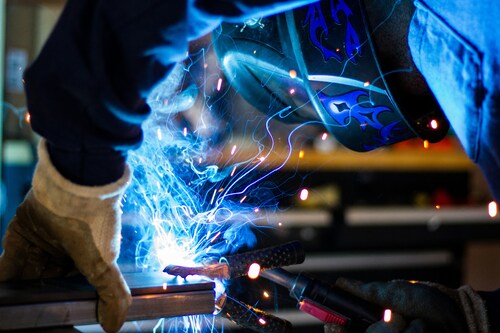Robots Dot to Dot Nattapong
Robots Dot to Dot Nattapong is a radical step in the development of robots as a new generation capable of transforming industries by increasing human talents in all areas. It is built upon modern sensors, accurate actuators, and powerful computers. Its applications include manufacturing, health care, agriculture, and delivery.
What is a “dot robot”?
A dot robot is a little, highly mobile bluff that can perform a variety of tasks and is primarily intended for educational and amusement purposes. These are smart devices. They are typically tiny and have numerous sensors. They are used to teach computer programming, robotics, and problem solving. 09This means that they can be controlled or allowed to work in a predetermined manner, be triggered by specific stimuli, and interact with the user, making them more appropriate for learning, exploration, and experimentation in both classroom and home settings.
Technical Specifications Robots Dot to Dot Nattapong
It has numerous technical elements that set it apart from other robotic systems and expand its potential. It has been intended to be accurate and efficient in operation by including better and enhanced sensors, actuators, and computation. The key specifications include:
Sensors: The vehicle includes forward-facing stereo cameras. They have extremely good resolution. It also includes LIDAR and ultrasonic sensors. They are intended to perceive the surroundings and objects.
Actuators: Tight motors and servos that allow correct movement to occur.
Computational Power: Optimized CPUs and GPUs for manipulating and analyzing real-time data to better decision-making.
Connectivity: IoT compatibility enables seamless interaction with other smart devices and systems.
Applications Robots Dot to Dot Nattapong
That is why it is important to examine the fact that the applications of Robots Dot to Dot Nattapong are numerous and may be utilized in a variety of settings. Here are a few important areas where this technology is having a huge impact:
Manufacturing: In the manufacturing sector, it is causing changes to the manufacturing line that have not been seen in quite some time. It aids in the completion of numerous sports with precision over time due to its calculating capability, hence minimizing errors.
Healthcare: In the field of health, it aids in the execution of difficult operations by providing the conductors with greater stability and mastery.
Agriculture benefits from it by automating labor-intensive tasks such as planting, harvesting, and monitoring crop fitness.
Logistics: It improves efficiency by automating warehouse control, inventory monitoring, and order fulfillment.
Benefits Robots Dot to Dot Nattapong
Increased Efficiency: It significantly improves performance by automating repetitive and labor-intensive strategies.
Enhanced Precision: This device’s improved sensors and actuators perform duties with a high degree of precision in surgical procedures, manufacturing, and fine manipulation, among many other operations, with no room for error.
Increased Safety: It may hire in risky environments, decreasing the risks that human employees face. This is especially relevant in industries such as manufacture, mining, and chemical processing.
Challenges and Limitations.
Although Robots Dot to Dot Nattapong has a lot of potential, it still confronts numerous issues and limitations:
Safety Concerns: The Dot to Dot Nattapong’s operation must ensure strict protective measures and procedures are enforced to avoid accidents or malfunctions.
Job Displacement: Automating tasks that were formerly performed by humans might lead to process displacement. It is critical to establish ways for people retraining and upskilling to offset the impact on employment.
Robots Dot to Dot Nattapong Latest Innovations
The robotics industry is continually changing and experiencing unprecedented growth. The following are some of the most recent advancements within the Robots Dot to Dot Nattapong:
Improved Sensors
The next generation of sensors may be incorporated into robotics, boosting the ability to detect and interact with the environment, making it more adaptive and efficient.
Advanced Machine Learning methods: Dot to Dot Nattapong uses machine learning methods to examine data. They also improve the performance over time. This supports its ability to handle difficult tasks and make informed decisions.
Future Prospects
The future of Robots Dot to Dot Nattapong looks promising, with further improvements expected. Some of the future viable upgrades include:
Autonomous Vehicles: Dot to Dot. Nattapong can potentially play an important function in the self-driving car system. They increase the cars’ navigation and decision-making capabilities.
Robotic Friends: Robots are becoming increasingly sophisticated and capable. They can form partnerships in ordinary sports, providing social connection. This is especially beneficial for seniors and those with impairments.
Expanded Industrial Applications: As technology advances, sectors and industries in creation, mining, and strength are using Robots Dot to Dot Nattapong. It’s for efficiency and safety.
Comparative analysis:
Comparing Robots Dot to Dot Nattapong to other technologies provides significant insight into their individual characteristics and capabilities. General areas for comparison include:
Performance: Robots outperform humans in everyday tasks. This is owing to improved sensing and computing. These talents are required for precision and adaptability in difficult tasks.
Versatility: Because of its versatility, Robots Dot to Dot Nattapong can be used in a variety of settings, including manufacturing and healthcare. This makes it more adaptable and valuable than most other robotics packages.
Cost-effectiveness: The initial investment for Dot to Dot Nattapong can be significant. However, the capacity to improve efficiency and reduce errors could result in significant long-term savings.
User Guides or Tutorials Robots Dot to Dot Nattapong
Nattapong may require assistance and instructions to use Robots Dot to Dot Nattapong effectively. Allowing the user to recognize how to use the generation will allow them to maximize its benefits in their workplace or lifestyle. The primary areas in which the consumer needs to be guided include:
Setup and Install: A detailed guide to setting up and installing Dot to Dot Nattapong, as well as configuring it properly for its purposes.
Operations and Maintenance: Guidelines for robotic operation: upkeep and addressing frequent issues.
Safety protocols Robotic from Dot to Dot Nattapong employs a variety of safety precautions to ensure complete protection while working and to protect both the robot and its human operators.
Conclusion Robots Dot to Dot Nattapong
It paves the path for new technologies. It will transform industry and human capabilities. Understanding the evolution, packages, blessings, and challenging scenarios will reveal its true cost, which may reshape existence during this ground-breaking era. It is a bright future with endless possibilities for improving how we live and work.
FAQs Robots Dot to Dot Nattapong
Q.1: What is Robot Dot to Dot Nattapong?
Ans. It is a complex robotic system designed for a variety of corporate applications.
Q.2: What industries profit from Robots Dot to Dot Nattapong?
Ans. Industries such as manufacturing, healthcare, agriculture, and logistics benefit.
Q.3: What are the most significant functions of this robot?
Ans. It consists of advanced sensors, specific actuators, and efficient computational capabilities.
Q.4: What are some difficult scenarios linked with this?
Ans: Challenges include safety problems, ethical dilemmas, and possibly employment displacement.
Q.5: How do Robots Dot to Dot Nattapong improve efficiency?
Ans. By automating repetitive and labor-intensive operations with high accuracy.













